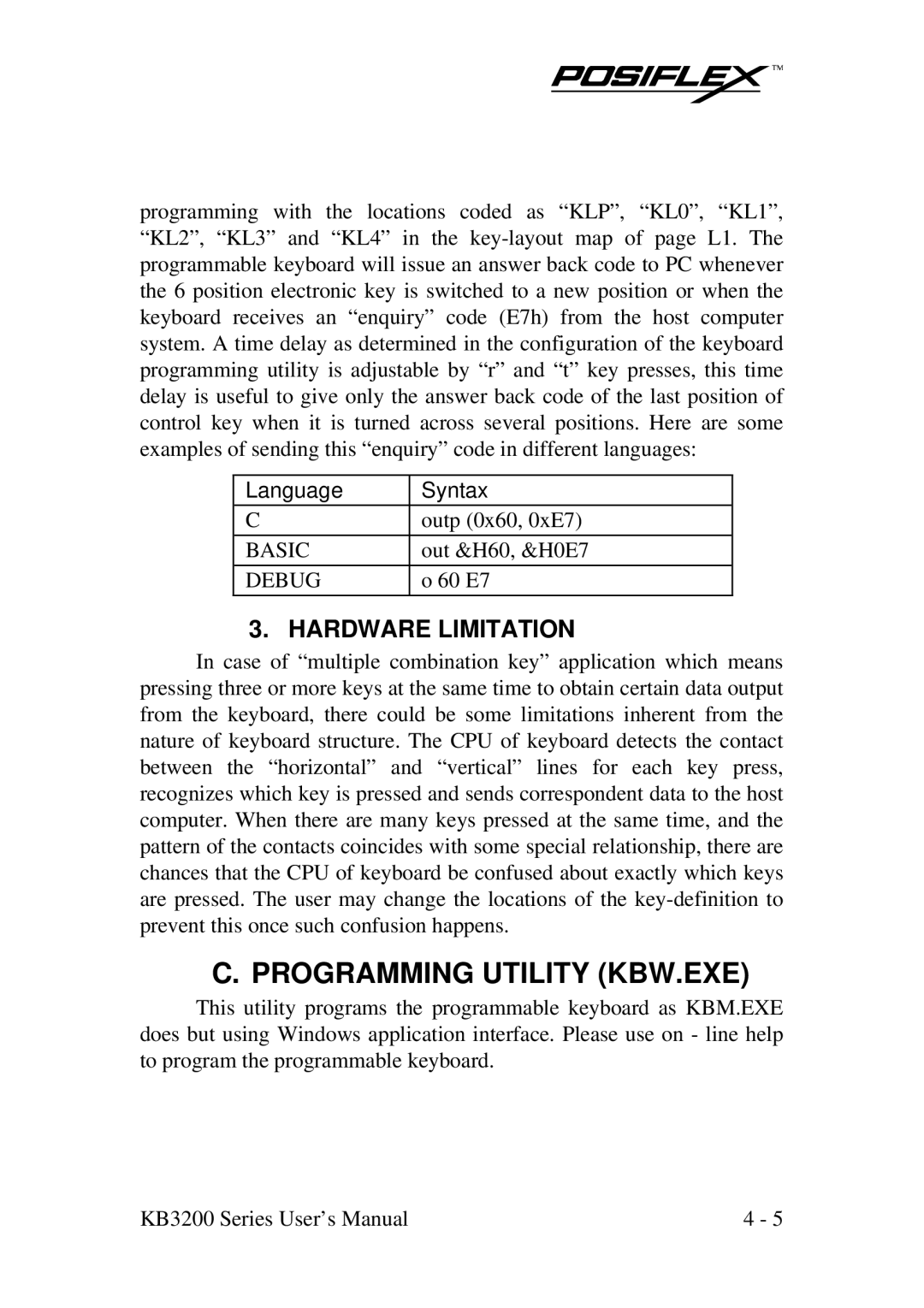programming with the locations coded as “KLP”, “KL0”, “KL1”, “KL2”, “KL3” and “KL4” in the
Language | Syntax |
|
|
C | outp (0x60, 0xE7) |
|
|
BASIC | out &H60, &H0E7 |
|
|
DEBUG | o 60 E7 |
3. HARDWARE LIMITATION
In case of “multiple combination key” application which means pressing three or more keys at the same time to obtain certain data output from the keyboard, there could be some limitations inherent from the nature of keyboard structure. The CPU of keyboard detects the contact between the “horizontal” and “vertical” lines for each key press, recognizes which key is pressed and sends correspondent data to the host computer. When there are many keys pressed at the same time, and the pattern of the contacts coincides with some special relationship, there are chances that the CPU of keyboard be confused about exactly which keys are pressed. The user may change the locations of the
C. PROGRAMMING UTILITY (KBW.EXE)
This utility programs the programmable keyboard as KBM.EXE does but using Windows application interface. Please use on - line help to program the programmable keyboard.
KB3200 Series User’s Manual | 4 - 5 |
